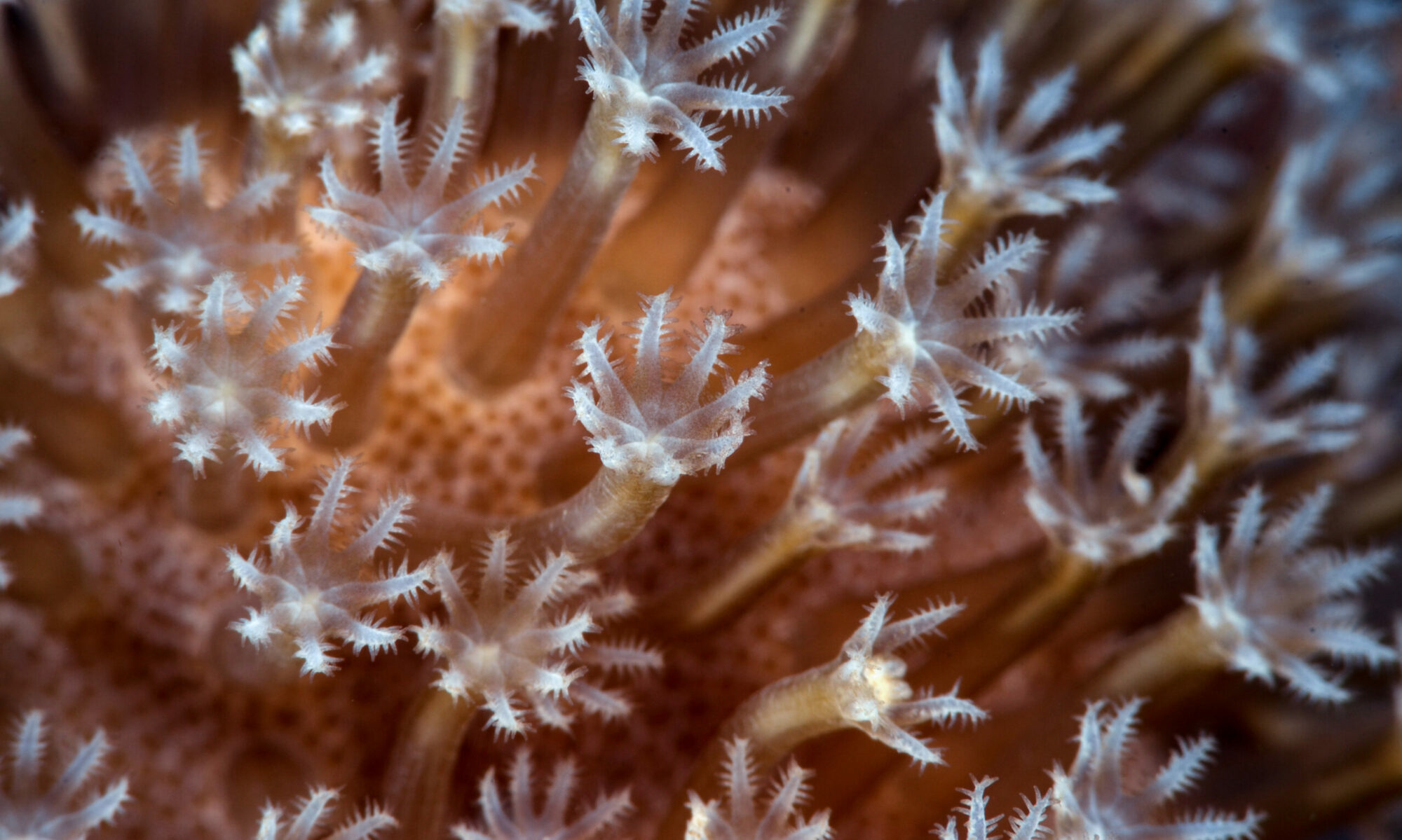In preparation for her master’s thesis defense this summer, Anela Duenas, a Guam NSF EPSCoR graduate assistant, presented her proposal, “Ecophysiology of Coral Species Replacement on Reef Flats of Guam,” that examines the relationship of the microalgae Symbiodiniaceae with reef-building corals Acropora pulchra and Pavona decussata.
Symbiodiniaceae is a family of dinoflagellate algae notable for symbiotic associations with reef-building corals. Through her research, Duenas confirmed two genera of symbionts dominating A. pulchra – Cladocopioum and Durusdinium – and one dominating P. decussata – Cladocopium.
In her presentation held in January at the UOG Marine Lab, Duenas noted the significance of the symbiotic relationship between coral and Symbiodiniaceae for the health and success of reef-building coral such as Acropora pulchra and Pavona decussata.
Duenas has begun working on her experiments under the mentorship of EPSCoR’s Bastian Bentlage, Ph.D., and will continue them over the next few months. She expects to start analyzing her results in March and to present her findings and defend her thesis in the summer.
As part of the process, Duenas will conduct thermal stress experiments on the two coral species that harbor these symbionts. The experiments are designed to simulate coral bleaching conditions, allowing her to observe how the corals and their accompanying symbiont variants react to and recover from thermal stress.
Through her experiments, she aims to document coral species replacement on Guam’s reef flats, assess the diversity of Symbiodiniaceae assemblages present, and understand how the observed corals harboring the symbionts respond to environmental changes.
“Presenting my proposal was a big step in the process. I am relieved it went well, and the audience raised important concerns and questions for me to consider moving forward,” said Duenas, expressing her appreciation for the discussion that followed her presentation. She and her committee carefully considered the feedback and adjusted her methods in ways she believes will improve her experiment.
“I feel more confident after meeting with my committee and addressing these concerns,” she remarked. “I am excited to move forward with my thesis project and conduct my experiment.”
Hailing from the island of Saipan, Duenas first became interested in marine science by observing coral under a microscope on the beaches where she grew up. She went on to earn a degree in natural resources management from Northern Marianas College before obtaining her bachelor’s degree in biology from the University of Guam.

In preparation for her master’s thesis defense this summer, Anela Duenas, a Guam NSF EPSCoR graduate assistant, presented her proposal, “Ecophysiology of Coral Species Replacement on Reef Flats of Guam,” that examines the relationship of the microalgae Symbiodiniaceae with reef-building corals Acropora pulchra and Pavona decussata.
Symbiodiniaceae is a family of dinoflagellate algae notable for symbiotic associations with reef-building corals. Through her research, Duenas confirmed two genera of symbionts dominating A. pulchra – Cladocopioum and Durusdinium – and one dominating P. decussata – Cladocopium.
In her presentation held in January at the UOG Marine Lab, Duenas noted the significance of the symbiotic relationship between coral and Symbiodiniaceae for the health and success of reef-building coral such as Acropora pulchra and Pavona decussata.
Duenas has begun working on her experiments under the mentorship of EPSCoR’s Bastian Bentlage, Ph.D., and will continue them over the next few months. She expects to start analyzing her results in March and to present her findings and defend her thesis in the summer.
As part of the process, Duenas will conduct thermal stress experiments on the two coral species that harbor these symbionts. The experiments are designed to simulate coral bleaching conditions, allowing her to observe how the corals and their accompanying symbiont variants react to and recover from thermal stress.
Through her experiments, she aims to document coral species replacement on Guam’s reef flats, assess the diversity of Symbiodiniaceae assemblages present, and understand how the observed corals harboring the symbionts respond to environmental changes.
“Presenting my proposal was a big step in the process. I am relieved it went well, and the audience raised important concerns and questions for me to consider moving forward,” said Duenas, expressing her appreciation for the discussion that followed her presentation. She and her committee carefully considered the feedback and adjusted her methods in ways she believes will improve her experiment.
“I feel more confident after meeting with my committee and addressing these concerns,” she remarked. “I am excited to move forward with my thesis project and conduct my experiment.”
Hailing from the island of Saipan, Duenas first became interested in marine science by observing coral under a microscope on the beaches where she grew up. She went on to earn a degree in natural resources management from Northern Marianas College before obtaining her bachelor’s degree in biology from the University of Guam.


























